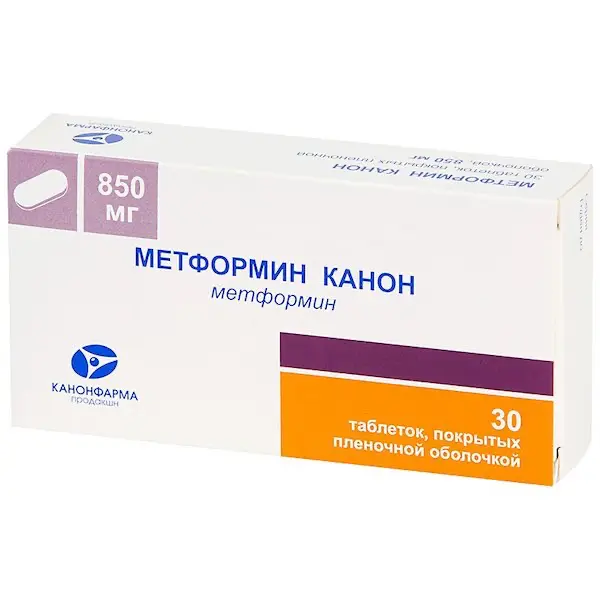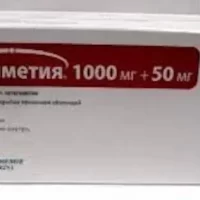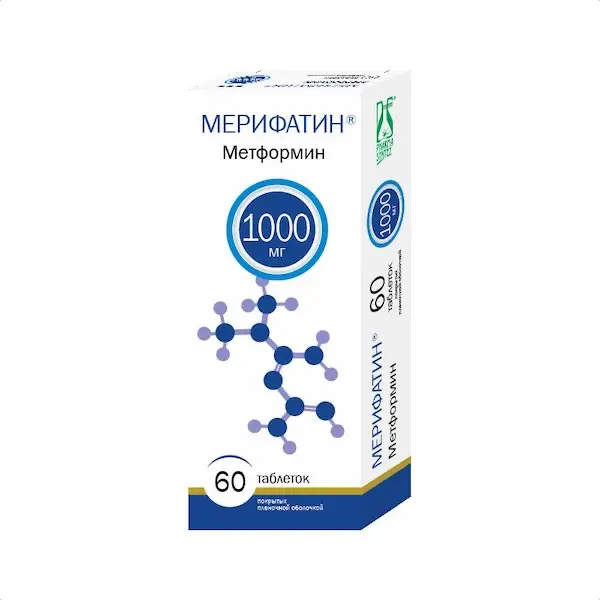Description
Metformin-Canon Pharmacodynamics
Metformin reduces hyperglycemia without leading to the development of hypoglycemia. Unlike sulfonylurea derivatives, it does not stimulate insulin secretion and has no hypoglycemic effect in healthy individuals. Increases the sensitivity of peripheral receptors to insulin and glucose utilization by cells (especially in muscle tissue). Reduces glucose production by the liver by inhibiting gluconeogenesis and glycogenolysis. Delays the absorption of glucose in the intestine. Metformin stimulates glycogen synthesis by acting on glycogen synthase. Increases transport capacity of all types of membrane glucose transporters.
In addition, it has a favorable effect on lipid metabolism: it reduces the concentration of total cholesterol, low-density lipoproteins and triglycerides.
While taking metformin, the patient’s body weight either remains stable or decreases moderately. Clinical studies have also shown the effectiveness of metformin for the prevention of diabetes mellitus in patients with prediabetes with additional risk factors for obvious type 2 diabetes, in whom lifestyle changes (and further in the section “Indications for use”) did not allow to achieve adequate glycemic control.
Indications
Type 2 diabetes mellitus, especially in obese patients with ineffective diet therapy and physical activity:
In adults as monotherapy or in combination with other oral hypoglycemic agents or with insulin;
In children from 10 years of age, as monotherapy or in combination with insulin.
Prophylaxis of diabetes mellitus type 2 in patients with prediabetes mellitus type 2 with additional risk factors of development of diabetes mellitus type 2, in whom changes in lifestyle did not allow to achieve adequate glycemic control.
Contraindications
– Hypersensitivity to metformin and/or to any excipient of the drug.
– Children under 10 years of age (due to the lack of data on the efficacy and safety of use in this age group).
– Diabetic ketoacidosis, diabetic precoma, coma.
– Severe renal failure (creatinine clearance (CK) less than 30 ml/min).
– Acute conditions with risk of renal dysfunction: dehydration (diarrhea, vomiting), severe infectious diseases, shock.
– Clinically expressed manifestations of acute or chronic diseases that may lead to the development of tissue hypoxia (including acute heart failure, chronic heart failure with unstable hemodynamic parameters, respiratory failure, acute myocardial infarction).
– Extensive surgical operations and injuries, when insulin therapy is indicated (see section “Special indications”).
– Hepatic insufficiency, liver dysfunction.
– Chronic alcoholism and acute alcohol intoxication.
– Pregnancy.
– Lactoacidosis (including anamnesis).
– Administration for at least 48 hours before and for 48 hours after radioisotopic or radiological studies with iodine contrast agent (see section “Interaction with other medicinal products”).
– Adherence to a hypocaloric diet (less than 1000 kcal/day).
Dosage and administration
- Administered orally.
- Adults:
Adult patients with normal renal function (CK? 90 ml/min). - Monotherapy and combined therapy in combination with other oral hypoglycemic agents in type 2 diabetes mellitus
– The usual starting dose is 500 mg or 850 mg 2-3 times a day after or during meals.
– Every 10-15 days, it is recommended that the dose be adjusted based on the results of plasma glucose concentration measurements. Slowly increasing the dose helps to reduce gastrointestinal side effects.
– The maintenance dose of the drug is usually 1500-2000 mg/day.
To reduce HF on the (gastrointestinal) side, the daily dose should be divided into 2-3 doses. - The maximum dose is 3000 mg/day divided into three doses.
In case of planning to switch from another hypoglycemic drug: it is necessary to stop taking another drug and start Metformin Canon in the dose stated above. - Combination with insulin
To achieve better blood glucose control, metformin and insulin in patients with type 2 diabetes can be used as a combination therapy. - The usual starting dose of Metformin Canon is 500 mg or 850 mg 2-3 times a day, while the dose of insulin is adjusted based on blood glucose concentrations.
- Monotherapy for prediabetes:
The usual dose is 1000-1700 mg per day after or during meals, divided into 2 doses.
Regular glycemic control is recommended to assess the need for further use of the drug. - Duration of treatment
The drug Metformin Canon should be taken daily, without interruption. In case of discontinuation of treatment, the patient should inform the physician.
Administration of the drug in special clinical groups of patients - Patients with renal insufficiency:
Metformin may be used in patients with moderate renal insufficiency (CKR 30-59 ml/min) only if there are no conditions that may increase the risk of lactoacidosis.
In patients with CKD 30-59 ml/min starting dose of this medicine is 500 mg or 850 mg 1 time per day. - Renal function should be closely monitored (every 3-6 months).
- If CK is less than 30 ml/min, metformin should be stopped immediately.
- Creatinine clearance (mL/min) Maximum daily dose (divided into 2-3 doses per day)Additional information
- 60-89 3000 mg Due to decreased renal function, a reduction in metformin dose should be considered.
- 45-59 2000 mg Before starting therapy with metformin, factors that increase the risk of lactoacidosis should be investigated (see section “Special Precautions”). The starting dose is half of the maximum daily dose.
30-44 1000 mg
<30 –
Metformin administration is contraindicated. - Elderly patients.
Because of possible decrease of renal function, Metformin Canon dose should be adjusted under regular control of renal function parameters (serum creatinine concentration should be determined at least 2-4 times per year). - Children and adolescents
In children from the age of 10 years, Metformin Canon may be used both in monotherapy and in combination with insulin. Usual starting dose is 500 mg or 850 mg once a day after or during a meal. The dose should be adjusted after 10-15 days based on the blood glucose concentration. The maximum daily dose is 2000 mg divided into 2-3 doses.





